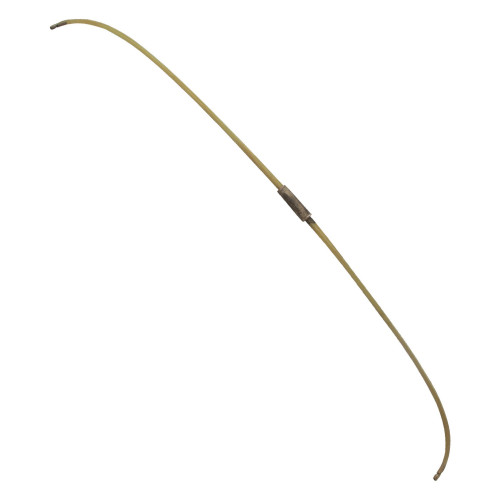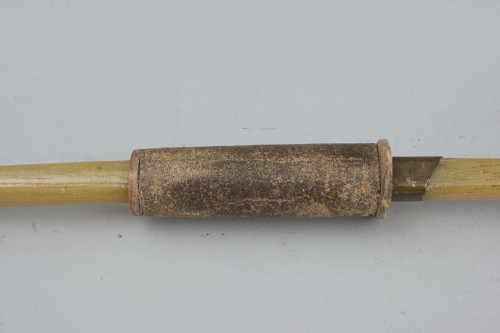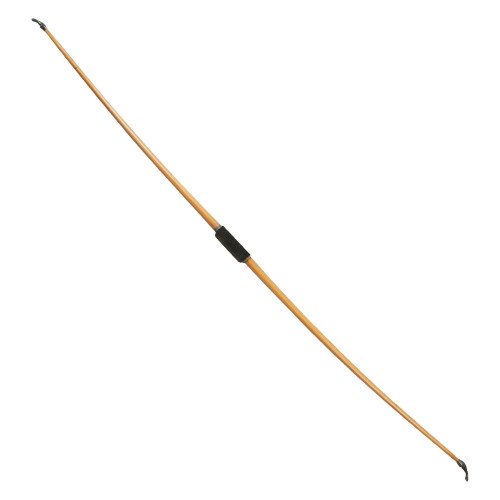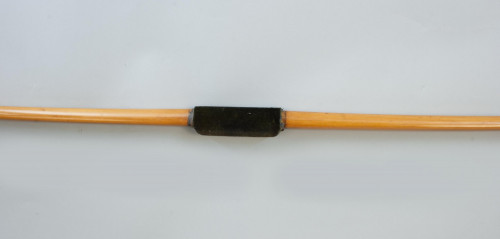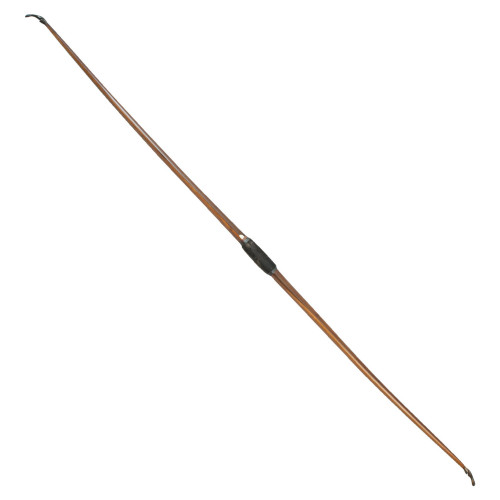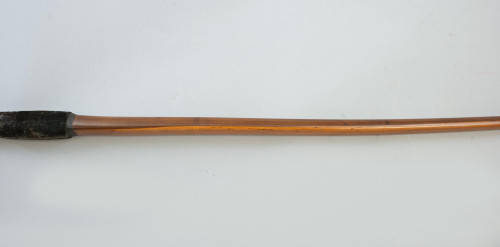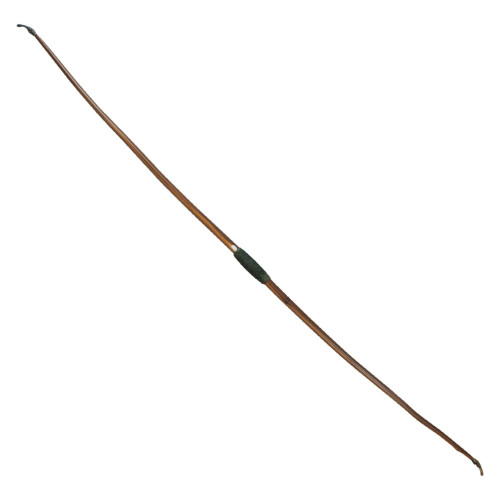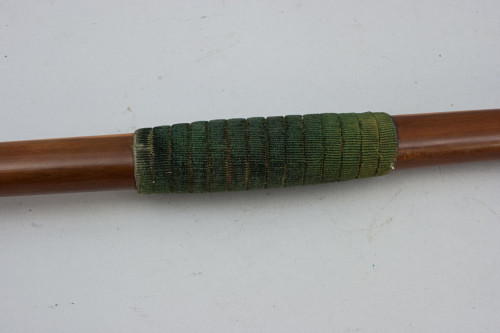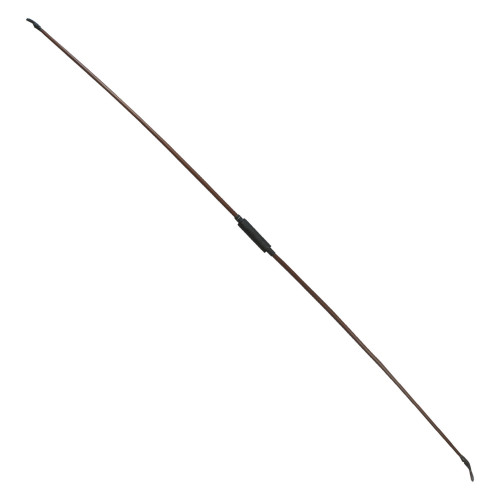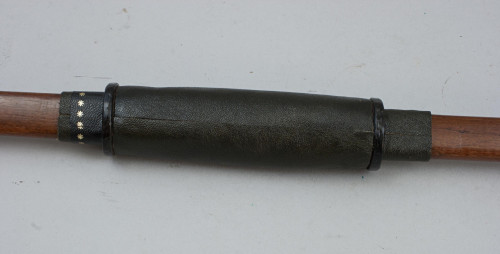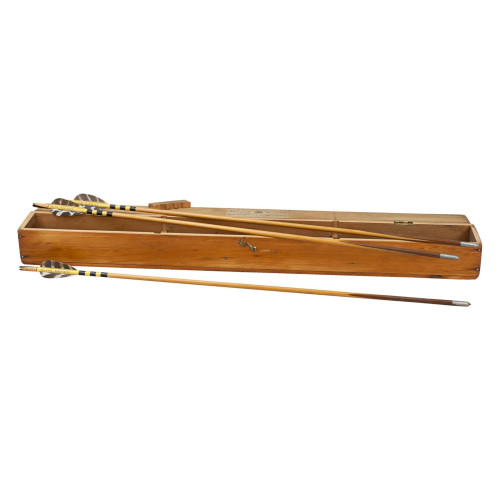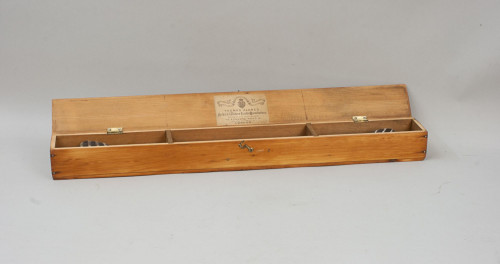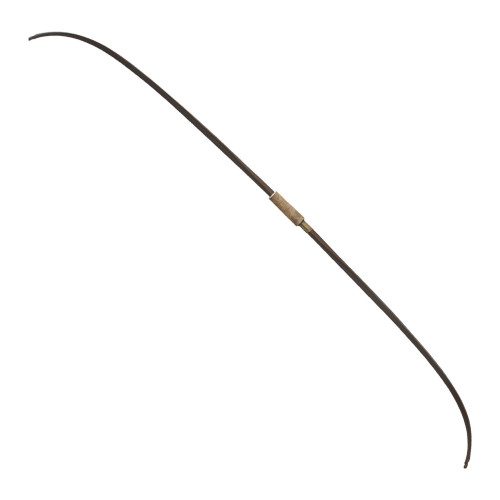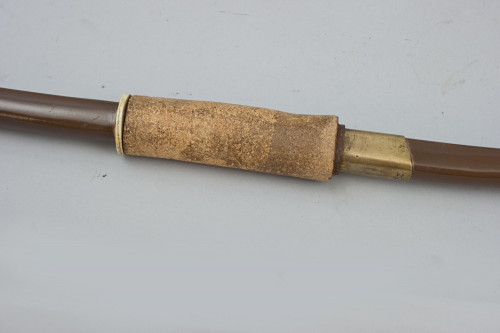Vintage Laminated Longbow By R. Hamm, London
Vintage Laminated Longbow By R. Hamm, London
Vintage Robert Hamm Longbow.
A very good, laminated archery long bow produced by Robert Hamm, London. The bow is fitted with two horn nocks and a green crushed velvet fabric handle. Just above the grip is the makers name 'R. Hamm, London' and the number 40, indicating the draw weight of this bow in lbs. A nice bow in good original condition.
The longbow came to prominence in the late Medieval period due to the success of the longbow within the military. Bowyers flocked to the City of London aiming to gain work that was increasingly widely available, the reason for this increase in demand can be attributed to success in the battles. Mainly Crecy (1346), Poitiers (1356) and Agincourt (1415), which were accredited to the talent of the English bowmen. In 1363 practising archery was made a compulsory activity for men, and the trade grew further. A system of apprenticeships was introduced for the craft of bowyers, whereby the apprentice was bound to the trade for seven years.
Target archery became popular during the Victorian period (1837-1901), when recreational archery was at its height of popularity. The heydays of archery as a social recreation in the 19th century saw four stand out bow-makers. Of course there were others who, principally makers of umbrellas and fishing tackle etc., added bowery to their repertoires with varying degrees of success; but it was Thomas Waring, Thomas Aldred, James Buchanan and Peter Muir who many turned to for quality and quantity.
Robert Hamm (1840 - 1863) Robert Hamm succeeded Thomas Waring, junior (1788 - 1865) around 1842, and had premises at 5 Bedford Street, Bedford Square until 1863. On the literary side he was responsible for publishing the last edition of Waring's 'Treatise on Archery' in 1847, the first edition being dated 1814.
In 1774 Thomas Waring moved to London with his employer, Sir Ashton Lever, to set up a museum of natural history and antiquities which became known as the 'Holophusikon', or the whole of nature.
But Sir Ashton, a member of the landed gentry, had also become interested in archery while living at the family estate on the outskirts of Manchester. That continued when he moved to Leicester House and Waring, his secretary who had learned the art of the bowyer from the Kelsalls of Manchester, put his skills to good use.
It was the foundation of what became the 'Royal Toxophilite Society'. It was established in 1781 and received a royal warrant from the Prince of Wales, later to become George IV. When he acceded to the throne he invited Waring's son, Thomas Jnr, to Windsor commanding him to bring the most complete set of archery equipment. The Royal Toxophilite Society is the oldest surviving archery society in England, followed closely by 'Woodmen of Arden' which was established in 1785 by Lord Aylesford at Meriden in the Midlands.
In London, the archers moved to Charlotte Street where part of the premises was used as Waring's workshop. He then established a warehouse and an archery practice range in Caroline Street, Bedford Square, where he prospered as the foremost maker and supplier of archery equipment.
In 1805 Thomas Waring Jnr (1788 - 1857) took over the business and his bows and arrows became sought after both in England and the U.S.A, particularly by the United Bowmen of Philadelphia, which was founded in 1828.
From 1821 to 1834 he leased an archery ground in Bayswater to the Toxophilites. The site is marked by the modern Archery Tavern.
The young man also wrote 'A Treatise on Archery', which gave advice on the practice of archery and how to organise an archery society. Many editions also included details of how to shoot with the bullet crossbow which, until the 1850's, was a popular weapon used for potting rabbits and rooks.
A fine watercolour of Waring shooting at the Toxophilites' grounds by Mr Slater was used as the basis for the portrait which appears on his bill heads. There are also surviving oil portraits of both father and son. Young Waring retired in 1842, bringing his and his father's involvement in target archery to 60 years.
They were succeeded at Bedford Square by Robert Hamm. He spent 12 years as apprentice and journeyman with the son and he remained in business till 1863.
The two images of Thomas Waring's bill and calling card are taken from the British Museum's website.
Dimensions:
1850-1899
1860's
United Kingdom
Very good, one small dent in wood work (see photo).
Thank you for your enquiry.
We will get back to you soon.
Please create wishlist to add this item to
RELATED ITEMS























